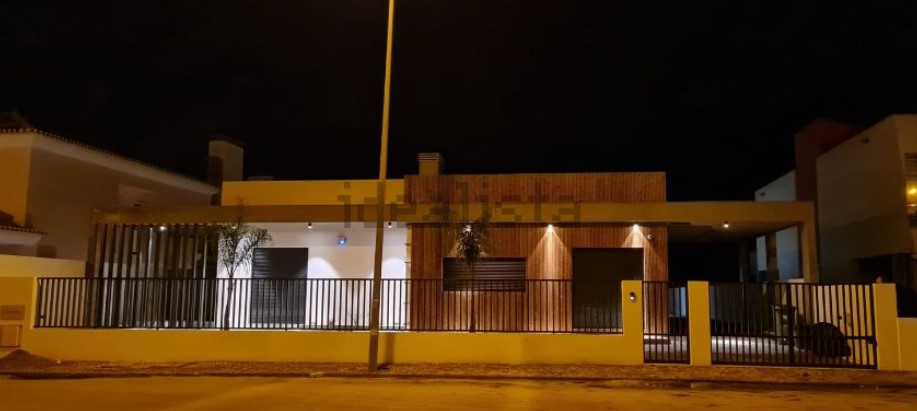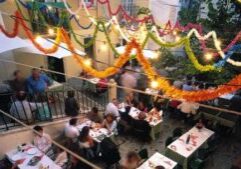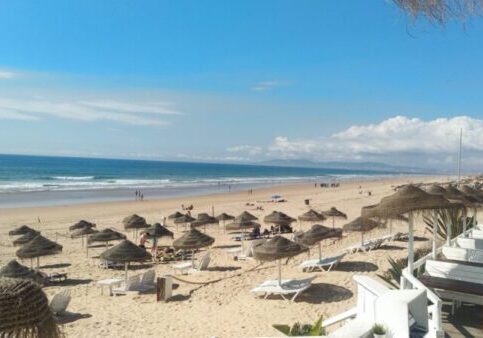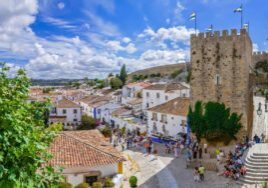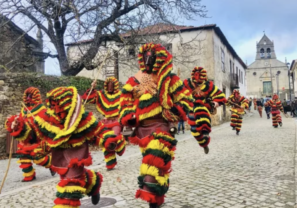Discovering Portugal: 10 things you didn’t know
![]()
Today, let’s discover Portugal! I’ve challenged myself to show you 10 things you didn’t know about Portugal. This article will cover a wide range of topics related to gastronomy, history, geography, lifestyle, culture… in Portugal. The aim is to teach you things you didn’t know!(yes! even you behind your screen who think you know everything about Portugal, you don’t know everything … no, no, no 🙂 )
Thanks to this article, you’ll be able to make an impression at your next family meal, lunch with friends or dinner party: “Hey friends, did you know that …”? It’s sure to make a big impression!
Think you know everything about Portugal? Are you sure you do? Let’s discover Portugal together.

1. What is the capital of Portugal?
SAMBA! The capital of Portugal is Rio de Janeiro! You think I’m going mad? Well, not so dear readers!
Although today, as you all know, Portugal’s capital is Lisbon, this wasn’t always the case. Portugal has had 5 different capitals: Guimarães, Coimbra, Lisbon, Rio de Janeiro, Angra do Heroismo, and Lisbon again. Yes, you read that right! Rio de Janeiro! But why?
After Napoleon’s armies invaded Portugal in 1807, the Portuguese royal family fled to Brazil, taking 15,000 Portuguese with them, including their court, and making Rio de Janeiro the capital of Portugal for 13 years.
Rio de Janeiro, capital of Portugal for 13 years
2. A small town in Portugal, home to a global phenomenon.
Does the town of Agueda ring a bell? Maybe not by name, but I’m sure that when you see the photo below, you’ll say to me: “ah yes, I’ve heard of it” or “ah yes, this concept exists in many cities”.
I visited the pretty town of Agueda, between Porto and Coimbra, three years ago and was amazed by the original idea of this little town.
The town has set up the UmbrellaSky project. The principle is simple: for an ephemeral period(often summer), the city is adorned with umbrellas suspended from cables above the streets. The umbrellas seem to float in the air, giving the city a Mary Poppins-like atmosphere. This project has several benefits:
- protect passers-by from the sun,
- color the streets,
- inviting the curious to discover the city, since photos of these pretty streets are widely circulated, notably on social networks, arousing the curiosity of people all over the world.
While some of you, I imagine, are already familiar with this little town and its umbrellas, what you may not know is that this concept was first launched in 2011 in the Portuguese town of Agueda. Since then, the concept has been developed in many cities around the world, including Lens, Toulouse, Béziers and Aurillac in France… The pioneers of this original and innovative idea, which is now being seen all over the world, are Portuguese!
The colorful streets of Agueda.
3. When the tower of Belém moves.
In Lisbon, the Belém Tower is one of the city’s must-see monuments. You’ll find it in every guidebook to Portugal, and in many different guises on postcards. You’re probably thinking that I’m not telling you anything new and that you know this monument(at least by name).
But what you may not know is that this tower, built in the early 16th century to protect the port of Lisbon and the starting point for the great Portuguese expeditions, wasn’t originally on this site. Today, if you go there, you won’t get a single toe wet to get there, yet it wasn’t originally built on land, but in the middle of the Tagus! So, what happened?
During the disastrous Lisbon earthquake of 1755, the city was almost completely demolished, but a few monuments remained standing, including this 35-metre tower. The riverbed of the Tagus had been altered, and the tower miraculously moved from the center of the Tagus to the coast, settling in its present location. Incredible, isn’t it?
Belém Tower.
4. Why do we all know a Portuguese person called Rui, João or Maria?
France allows a great deal of freedom in the choice of a child’s first name. In fact, this subject was in the news some time ago with the Hapsatou – Zemmour affair and Zemmour’s inappropriate comments. Unlike France, Portugal has quite strict regulations on the naming of children. The Portuguese government is very fussy about the choice of first names, with an official list of around 1,000.
First names given to children of Portuguese nationality must comply with several rules:
- no more than two,
- follow the spelling and phonetics of the current Portuguese language,
- allow the gender of the bearer to be identified,
- not be identical to the first name of a living sibling,
- not be a diminutive. Example: you can call your son Tomás, but not Tom.
(Exception: if one of the parents has a nationality other than Portuguese, he or she may give the child a first name that conforms to the customs of the other country)
5. Sushi: a Portuguese culinary specialty
So, no, sushi is not a Portuguese culinary specialty, but a Japanese one. On the other hand, tempura, a vegetable or shellfish surrounded by breadcrumbs and deep-fried, is not really Japanese! Tempura owes its origins to the Portuguese who landed on Japanese shores in the 16th century.
The Portuguese used to cook fish and shellfish in a doughnut batter. The Japanese drew inspiration from this cooking method to create tempura. The term “tempura” comes from the verb “temperar”, which means “to season” in Portuguese. Strangely enough, in Portugal, the term “tempura” is rarely used, and in restaurants you’ll more likely see the term “peixinhos da horta”. And if you’d like to try the recipe yourself, it’s here(by the way, I can sacrifice myself to try it!).
Finally, you should know that the Japanese language includes around a hundred Portuguese words, since the Portuguese were the first Europeans to arrive in Japan in the 16th century. Here are a few examples, each with the Portuguese word, the Japanese word and the French translation:
- irmão – iruman – frère
- candeia – kandeya – lamp
- obrigado – arigatô – thank you
Peixinhos da horta: green beans coated with a kind of doughnut batter and fried.
6. Children smoking!
Here’s a piece of information you probably didn’t know, and which I was a little offended to learn. While in France, children wait impatiently for Epiphany to taste good “galettes des rois” and above all get the feast, in Portugal, in one village, there’s a very particular tradition that’s causing a lot of ink to flow. In the village of Vale de Salgueiro, in northern Portugal (between Chaves and Mirandela), parents buy packs of cigarettes for their children and encourage them to smoke on Epiphany. No one has any particular meaning for this “custom”, which is said to have been handed down from generation to generation for hundreds of years.
Children in the streets of Vale de Salgueiro on Epiphany Day.
7. Portugal has the world’s oldest!
I’ve walked past this institution many times without knowing it was the oldest in the WORLD! It’s the “Bertrand” bookshop(well, the name doesn’t sound very Portuguese, I grant you), but this bookshop is the oldest in the world. It’s located on the famous Rua Garrett in Lisbon’s Bairro Alto, and has been since 1732! The bookshop was destroyed by an earthquake in 1755, but was later relocated to the same spot. If you’re passing through the capital and are passionate about literature, don’t miss this institution.
The oldest bookshop in the world.
8. Cristiano Ronaldo is the 100,000th and Eric Cantona the 150,000th.
As you probably know and have noticed, soccer is the national sport. It’s such an important sport in Portugal that two of the country’s clubs are the European soccer clubs with the most “socios”(members).
In fact, Benfica and Sporting (two Lisbon clubs) occupy second and third place respectively in the ranking of soccer clubs with the most socios in Europe, after Bayern Munich (German soccer club). Benfica has just under 185,000 members and Sporting 170,000.
At Sporting, the 100,000th member is Cristiano Ronaldo and the 150,000th is Eric Cantona. Who will be the 200,000th?
Sporting stadium (top)/ Benfica stadium (bottom).
9. Cod: not so Portuguese!
Cod (“bacalhau” in Portuguese) is a staple of Portuguese cuisine. Just take a trip to any Portuguese supermarket and you’ll see the huge stalls of dried cod. There’s even a legend that the Portuguese have 365 ways of cooking cod, one for every day of the year. So it’s impossible to avoid this fish if you go to Portugal. In fact, can you name a restaurant in Portugal that doesn’t serve cod? It’s hard, isn’t it? Ah, if Mc Donald’s? Well, even Mc Donald’s used to have a cod salad with chickpeas (salada de bacalhau com grão).
So yes, you probably knew that cod was an essential fish in Portugal, but if you’re not a big fishing connoisseur(like me), well, you know that this fish isn’t found in Portugal at all, and therefore has no connection with the country to begin with. So why has cod become the emblematic fish of Portugal when it’s not found off the coast?
A fishing agreement between the Portuguese and the British was signed in the 14th century. But the cod craze really exploded during the period of the Great Discoveries in the early 15th century. Sailors were looking for a non-perishable food that could travel for several months. Salt cod was therefore an ideal, inexpensive food, and over the years it became the country’s flagship fish.
Stalls of dried cod in a Portuguese supermarket.
10. It is the world’s most advanced in its category.
Whatever your country, you probably regularly use ATMs (Automated Teller Machines), which in many countries are also known as ATMs, and in Portugal as “Multibanco”. But the Multibanco is much more than just a basic ATM, as it is in other countries.
In fact, beyond the standard functions(account consultation, cash withdrawal, bank transfer…), Portugal’s Multibanco is the most advanced system in the world. Long before the advent of online banking, ATMs in Portugal were already offering a wide range of banking and other services.
Today, 60 operations are available via ATMs in Portugal, from the most basic to the most original: pay your bills, pay your taxes, buy concert tickets, make donations to associations, add credit to your phone..
Multibanco: distributor in Portugal.
In conclusion
Even when you’ve lived in a country for a long time, you never know everything about it, and that’s what I find so exciting. Indeed, whether it’s your own country or a new one, if you’re curious, you’ll discover new things every day, anecdotes, lifestyles, history… of the place you’re in. I can’t stress this enough, but BE CURIOUS and your expatriation experience will be all the better for it. I hope this article has taught you a few things you didn’t know about Portugal, and I’ll see you soon for a new article.
So, tell me, did you learn anything or did you already know everything?
If you liked this article, please click on the “Like” button below. And don’t forget to find us on our social networks: our Facebook group “Amoureux du Portugal”, our Facebook page “Vivre au Portugal” and our Instagram “Vivre au Portugal”.
Receive monthly updates on our blog and our selection of properties for sale
* mandatory fieldFirst name * *Last name Telephone E-mail address * *Current city of residence Focus: *
- Buying a property in Portugal
- Renting a property in Portugal
- Nothing special in mind
Date of arrival in Portugal How can we help you? * * Please contact me:*
- Quickly please
- Later please
Region of interest *
- Almada
- Aroeira
- Seixal
- Setubal
- Other
You can view our Privacy Policy and Termsand Conditions here
Articles Populaires
dernières annonces
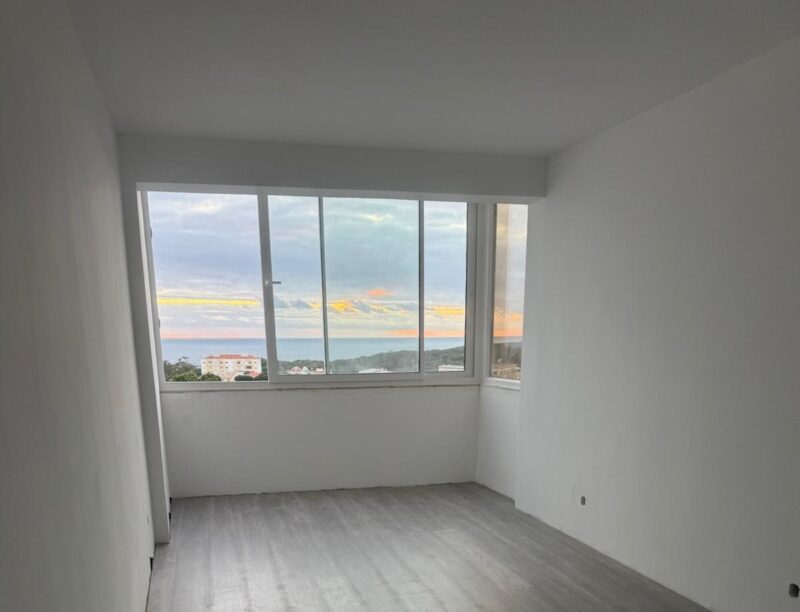
2 bedroom apartment with sea view, 10km from Lisbon and 2km from the beaches
Rua da Bica, 103Discover this magnificent 2 bedroom apartment with views of Arriba Fóssil and the sea, 2km…

Duplex apartment with sea view 15 minutes from Lisbon
rua Santa Teresa 7Bedroom + duplex apartment with sea view and 15 minutes from Lisbon.

Single-storey house with swimming pool
Just a few meters from the magnificent bay of São Martinho do Porto, lies this…
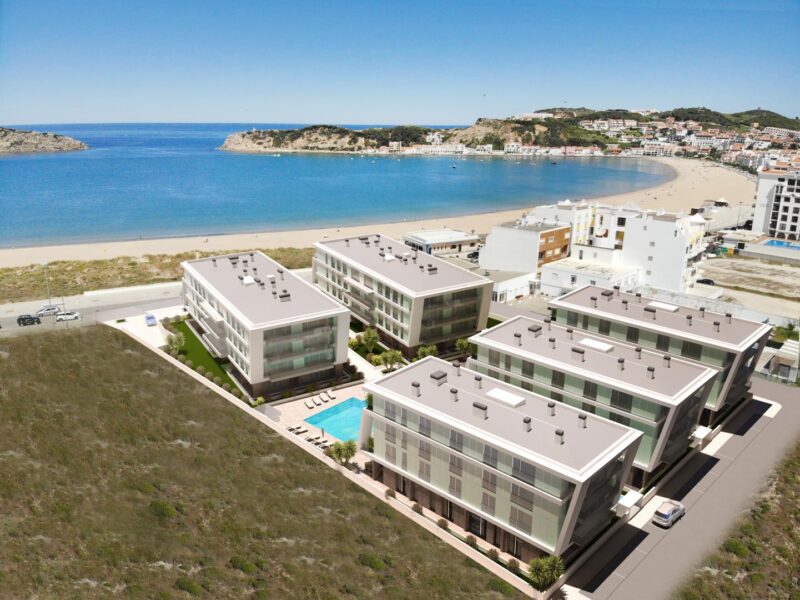
Condominium apartments facing the sea
São Martinho do PortoBeautiful apartments in São Martinho do Porto “Janela da Baía”! Located in the heart of…

Villa already finished and ready to move in: 4-suite bungalow on 750m2 plot in a quiet area of Azeitão
Rua de ParisHouse already finished and ready to move into! Close to shops and services, quick access…

Magnificent house with basement, indoor and outdoor pool in Verdizela/Aroeira
Verdizela/AroeiraNew turnkey project: magnificent single-storey villa, 498m2 in surface area, high-end finishes on a 1875m2…

Luxury apartment on the edge of a nature reserve
Your modern, spacious apartment between the beach and Lisbon’s capital. – Beach 5min – Golf…
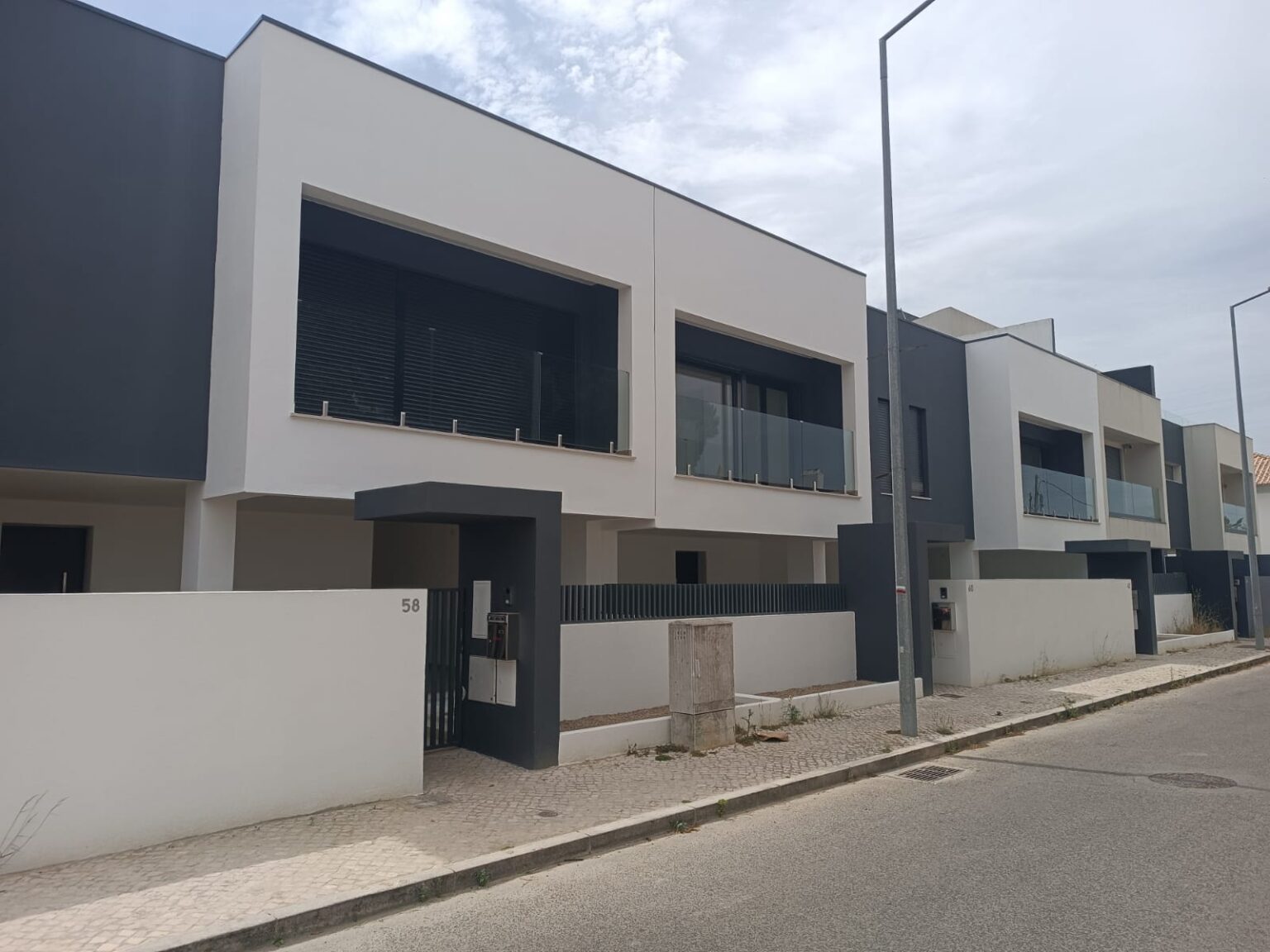
House T3 1 10 min from Lisbon and 5 min from the beaches
PêraREADY TO MOVE IN! New T3 1 ready-to-live-in house in a quiet, rural neighborhood with…

4 bedroom villa with pool and jacuzzi in Aroeira
rua são miguelModern, minimalist architect-designed house with exceptional details in a quiet location in Aroeira 2-storey house…
Inscrivez-vous à notre newsletter
Recevez chaque mois les derniers articles de notre blog "la vie au Portugal" et notre sélection de biens immobiliers à vendre.












